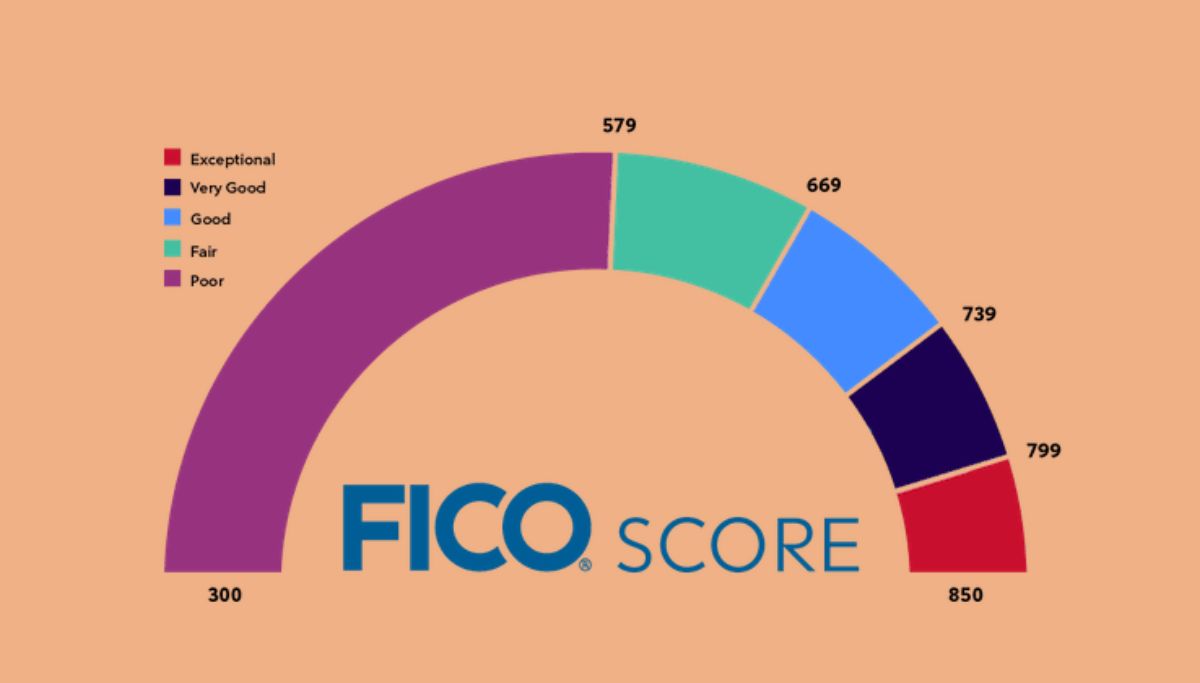Introduction
Welcome to the world of credit lending, where individuals and businesses have the opportunity to access much-needed funds to meet their financial goals and aspirations. Whether it’s for personal expenses, starting a new business, or expanding an existing one, credit lending plays a crucial role in providing the necessary capital.
So, what exactly is credit lending? In simple terms, it refers to the process of granting money or resources to borrowers with the expectation that it will be repaid later, usually with interest. It serves as an essential financial tool for both borrowers and lenders, enabling economic growth and facilitating financial transactions.
Credit lending works on the principle of trust and risk. Lenders assess the creditworthiness and ability of borrowers to repay the borrowed funds, taking into account factors such as income, credit history, and collateral. This evaluation helps lenders determine the terms and conditions for lending, including the interest rate, repayment period, and any additional fees.
There are various types of credit lending available in the market, catering to different needs and circumstances. From personal loans and mortgages to business lines of credit and credit cards, borrowers can choose the option that best suits their requirements.
One of the key advantages of credit lending is the flexibility it offers. Unlike traditional banking, which often involves lengthy approval processes and strict criteria, credit lending provides borrowers with quick access to funds. This enables individuals to address immediate financial needs, seize investment opportunities, or navigate unexpected expenses.
However, as with any financial transaction, credit lending comes with its own set of risks. Borrowers must be diligent in their repayment obligations to maintain a good credit history and avoid penalties or damage to their financial reputation. Lenders, on the other hand, face the risk of default by borrowers, leading to potential losses.
In this article, we will explore the various aspects of credit lending, including its types, benefits, risks, and the factors that affect the lending process. We will also compare credit lending to traditional banking methods, providing you with a comprehensive understanding of this vital component of the modern financial landscape.
Definition of Credit Lending
Credit lending refers to the process of extending funds or resources to borrowers with the expectation of repayment over a specific period, usually with interest. It is a financial mechanism that enables individuals and businesses to access capital and meet their financial needs and aspirations.
In credit lending, a borrower obtains funds from a lender, which can be an individual, a financial institution, or an online lending platform. The borrower enters into a legally binding agreement with the lender, outlining the terms and conditions of the loan, including the amount borrowed, the interest rate, and the repayment schedule.
The borrower is responsible for repaying the loan within the agreed-upon timeframe, making periodic payments that include both principal and interest. The lender, in turn, earns a return on their investment through the interest charged on the borrowed amount.
One of the fundamental principles of credit lending is the assessment of creditworthiness. Lenders evaluate the borrower’s ability to repay the loan by considering various factors, such as their income, credit history, employment stability, and collateral (if applicable). This evaluation helps lenders determine the risk associated with lending and establish suitable terms and conditions.
Credit lending comes in different forms, including personal loans, mortgages, auto loans, student loans, and business loans. Each type of credit lending serves a specific purpose and is designed to cater to the unique needs of borrowers.
It is important to note that credit lending is not limited to traditional banking institutions. With advancements in technology, online lending platforms have emerged as alternative sources of credit. These platforms connect borrowers with potential lenders and streamline the lending process through digital applications and instant approvals.
In summary, credit lending entails the provision of funds to borrowers with the expectation of repayment, typically with interest. It enables individuals and businesses to access the necessary capital to achieve their financial goals and responsibilities. By assessing creditworthiness, lenders mitigate the risk associated with lending, while borrowers benefit from the flexibility and convenience of accessing funds.
How Does Credit Lending Work?
Credit lending follows a structured process that involves both borrowers and lenders. Understanding how credit lending works is essential for individuals and businesses looking to access funds for various purposes.
The first step in credit lending is for the borrower to identify their financial needs and determine the amount of funds required. Once the borrower has established the purpose of the loan, they can start exploring different lending options available in the market.
Borrowers can approach traditional banks, credit unions, or online lending platforms to apply for a loan. They will be required to fill out an application form, providing personal and financial information, such as income, employment history, credit score, and any existing debts. Some lenders may also ask for collateral or a co-signer to secure the loan.
Once the application is submitted, the lender begins the process of evaluating the borrower’s creditworthiness. They review the provided information, assess the borrower’s credit history, and calculate their debt-to-income ratio. This evaluation helps the lender determine the risk associated with lending to the borrower.
Based on the evaluation, the lender will decide whether to approve or reject the loan application. If approved, the lender will provide the borrower with the terms and conditions of the loan, including the loan amount, interest rate, repayment schedule, and any applicable fees.
Upon accepting the loan offer, the borrower and lender enter into a legally binding agreement. This agreement outlines the rights and responsibilities of both parties, including the borrower’s obligation to repay the loan and the consequences of defaulting on payments.
Once the loan is disbursed, the borrower receives the funds and can use them for the intended purpose. The borrower is responsible for making regular payments according to the agreed-upon schedule, which includes both principal and interest.
The lender closely monitors the repayment process to ensure timely payments are made. If the borrower fails to make payments as agreed, the lender may impose penalties, charge additional interest, or even take legal action to recover the outstanding debt.
Once the borrower completes the repayment of the loan, including any interest and fees, the credit lending process concludes. The borrower’s successful repayment enhances their credit history, making it easier for them to access credit in the future.
It is important for borrowers to carefully consider their financial capacity and assess the terms and conditions of the loan before entering into a credit lending arrangement. Responsible borrowing and regular timely repayments are vital for maintaining a healthy credit profile and avoiding potential financial issues.
In essence, credit lending works by providing borrowers with the funds they need while ensuring lenders are repaid with interest. The process involves careful evaluation of creditworthiness, loan approval, the establishment of loan terms, loan disbursement, and regular repayment until the loan is fully repaid.
Types of Credit Lending
Credit lending encompasses various types of loans designed to meet the diverse financial needs of borrowers. Understanding the different types of credit lending can help individuals and businesses choose the most suitable option for their specific requirements. Here are some common types of credit lending:
- Personal Loans: Personal loans are a popular form of credit lending that individuals can utilize for a wide range of purposes. These loans are typically unsecured, meaning no collateral is required. Borrowers can use personal loans for expenses such as debt consolidation, home improvement, medical bills, or unexpected emergencies. The terms and interest rates of personal loans vary depending on the borrower’s creditworthiness and the lender’s policies.
- Mortgages: A mortgage is a long-term loan specifically designed for individuals looking to purchase real estate. This type of credit lending enables borrowers to finance a property while making regular payments over an extended period. Mortgages often have lower interest rates compared to other loans due to the collateral provided by the property itself. Lenders may offer various mortgage options, including fixed-rate mortgages and adjustable-rate mortgages.
- Auto Loans: Auto loans are specifically designed to finance the purchase of a vehicle. Borrowers can secure auto loans through financial institutions or dealerships. These loans allow borrowers to spread the cost of the vehicle over an extended period. The vehicle itself serves as collateral, which provides security to the lender. Auto loans come with specific terms, interest rates, and repayment schedules that borrowers need to adhere to.
- Student Loans: Student loans are loans provided to individuals pursuing higher education. These loans help cover the cost of tuition, textbooks, and other educational expenses. Student loans typically have lower interest rates and favorable repayment terms, allowing borrowers to repay the loan after completing their studies or entering the workforce. Depending on the country and specific programs available, student loans may be subsidized or unsubsidized.
- Business Loans: Business loans are specifically designed to meet the financial needs of entrepreneurs and small businesses. These loans can be used for various purposes, such as funding start-ups, expanding operations, purchasing equipment, or managing cash flow. Business loans can be secured or unsecured, depending on the borrower’s creditworthiness and the lender’s requirements. Interest rates, repayment terms, and loan amounts vary depending on the borrower’s business type, financial history, and purpose of the loan.
These are just a few examples of the types of credit lending available in the market. Other forms of credit lending include credit cards, lines of credit, home equity loans, and payday loans. Each type of credit lending serves a specific purpose and comes with its own set of terms, interest rates, and eligibility criteria. It is essential for borrowers to thoroughly research and compare different loan options to make an informed decision that aligns with their financial goals and capabilities.
Benefits of Credit Lending
Credit lending offers several benefits to both borrowers and lenders. It serves as an essential financial tool that enables individuals and businesses to achieve their financial goals and overcome temporary cash flow challenges. Here are some key benefits of credit lending:
- Access to Capital: One of the primary benefits of credit lending is the access to much-needed capital. Borrowers can obtain funds quickly to address immediate financial needs, seize investment opportunities, or cover unexpected expenses. Credit lending provides a flexible and convenient solution for individuals and businesses in need of financial resources.
- Multiple Loan Options: Credit lending offers a wide range of loan options to suit various needs and circumstances. Whether it’s a personal loan for debt consolidation, a mortgage for purchasing a home, or a business loan for expanding operations, borrowers can choose the loan type that aligns with their requirements.
- Flexible Repayment Terms: Credit lending often offers flexible repayment terms. Borrowers can negotiate the duration of the loan and choose a repayment schedule that suits their financial situation. This flexibility allows borrowers to manage their cash flow efficiently and repay the loan without undue financial strain.
- Building Credit History: A significant advantage of credit lending is the opportunity to build a positive credit history. By making regular and timely loan payments, borrowers demonstrate their creditworthiness and responsibility to future lenders. This can open doors to more favorable loan terms and increased access to credit in the future.
- Interest Rates: Depending on the borrower’s creditworthiness and the prevailing market conditions, credit lending can offer competitive interest rates. Borrowers with a good credit score and financial stability may qualify for lower interest rates, reducing the overall cost of borrowing.
- Financial Planning: With credit lending, borrowers have the advantage of planning their finances effectively. They can use loan proceeds strategically to consolidate debt, invest in opportunities, or make planned purchases. This allows borrowers to have better control over their finances and work towards their long-term financial goals.
- Emergency Preparedness: Credit lending can provide a safety net during emergencies or unforeseen circumstances. Having access to a line of credit or a readily available loan can help individuals and businesses manage unexpected expenses and bridge temporary financial gaps.
These benefits make credit lending a valuable component of the modern financial landscape. It empowers individuals and businesses to achieve their financial objectives, seize opportunities, and navigate through financial challenges.
Risks of Credit Lending
While credit lending comes with numerous benefits, it also entails certain risks that both borrowers and lenders need to be aware of. Understanding these risks can help individuals and businesses make informed decisions and manage their financial obligations effectively. Here are some common risks associated with credit lending:
- Default Risk: Default risk refers to the possibility that a borrower will fail to make loan repayments according to the agreed-upon terms. Borrowers who struggle with financial difficulties or unforeseen circumstances may find it challenging to meet their repayment obligations. Lenders face the risk of financial loss if borrowers default on their loans.
- Interest Rate Risk: Interest rate risk is the potential for changes in interest rates to affect the cost of borrowing and loan repayments. Fluctuations in market interest rates can impact the interest rates borrowers pay on their loans. Borrowers with variable interest rate loans or adjustable-rate mortgages may face higher monthly payments if interest rates rise.
- Overborrowing: Credit lending can tempt individuals and businesses to overextend themselves financially. Taking on excessive debt beyond one’s means can lead to difficulties in meeting repayment obligations. Overborrowing can also negatively impact a borrower’s credit score and financial stability.
- Unscrupulous Lenders: In the credit lending market, there is a risk of encountering unscrupulous lenders who engage in predatory lending practices. These lenders may impose exorbitant interest rates, hidden fees, or unfair terms and conditions. Borrowers need to exercise caution and thoroughly research and vet potential lenders to avoid falling victim to predatory lending.
- Impact on Credit Score: Late or missed loan payments can have a detrimental effect on a borrower’s credit score. A lower credit score can make it harder for borrowers to access credit in the future or result in higher interest rates and less favorable loan terms. It is crucial for borrowers to prioritize timely repayments to maintain a good credit profile.
- Debt Cycle: Mismanaged credit lending can lead to a debt cycle, where borrowers continually rely on new loans to repay existing debts. This can create a cycle of increasing debt, interest payments, and financial stress. Borrowers should prioritize responsible borrowing, budgeting, and debt management strategies to avoid falling into a debt cycle.
- Collateral Risk: Secured loans, where collateral is provided to obtain credit, come with the risk of losing the pledged assets if the borrower defaults on the loan. Lenders have the right to seize and sell the collateral to recover their money. Borrowers need to carefully consider the implications of providing collateral and ensure they can meet their loan obligations.
It is crucial for borrowers to assess their financial capacity and carefully consider the risks involved in credit lending before committing to a loan. Lenders, likewise, need to evaluate the creditworthiness and repayment ability of borrowers to minimize their risk exposure. Open communication and transparency between borrowers and lenders can help mitigate the potential risks associated with credit lending.
Credit Lending Process
The credit lending process involves several steps, from the initial loan application to the final disbursement of funds. Understanding the credit lending process is essential for both borrowers and lenders to ensure a smooth and efficient experience. Here is a breakdown of the typical credit lending process:
- Loan Application: The process begins with the borrower submitting a loan application to the lender. The application typically requires personal and financial information, including income, employment history, credit score, and the purpose of the loan.
- Credit Evaluation: Upon receiving the loan application, the lender assesses the borrower’s creditworthiness. This evaluation involves reviewing the provided information and may include checking the borrower’s credit history, income verification, and assessing their debt-to-income ratio.
- Loan Approval: Based on the credit evaluation, the lender determines whether to approve or reject the loan application. If approved, the lender provides the borrower with the terms and conditions of the loan, including the loan amount, interest rate, and repayment schedule.
- Loan Documentation: Once the borrower accepts the loan offer, both parties enter into a loan agreement. This document outlines the rights and responsibilities of both the borrower and the lender. The agreement includes details such as the loan amount, repayment terms, interest rate, and any applicable fees.
- Loan Disbursement: After the loan documentation is complete, the lender disburses the funds to the borrower. The funds are transferred to the borrower’s designated bank account or issued in the form of a check, depending on the lender’s policies.
- Loan Repayment: Once the loan is disbursed, the borrower begins making regular repayments. These payments typically include both principal and interest. The borrower is responsible for following the agreed-upon repayment schedule until the loan is fully repaid.
- Monitoring and Communication: Throughout the loan term, both the borrower and the lender maintain open communication. The lender monitors the repayment progress, ensuring that the borrower is meeting their obligations. The borrower can reach out to the lender with any concerns or questions regarding their loan.
- Loan Closure: Upon completing the loan repayments, the borrower officially closes the loan. The lender confirms the final payment and issues any necessary paperwork to acknowledge the loan’s closure.
It is important for borrowers to carefully review the loan terms and conditions, understand the repayment obligations, and make timely payments to maintain a good credit history. Lenders must ensure a thorough evaluation of borrowers’ creditworthiness and maintain clear communication throughout the lending process to mitigate potential risks.
Factors that Affect Credit Lending
Credit lending decisions are influenced by a variety of factors that lenders consider when evaluating loan applications. These factors help lenders assess the creditworthiness of borrowers and determine the terms and conditions of the loan. Understanding these factors can help individuals and businesses navigate the credit lending process more effectively. Here are some key factors that can impact credit lending:
- Credit History: A borrower’s credit history plays a crucial role in credit lending decisions. Lenders review the borrower’s credit report, which includes information about their past borrowing and repayment behavior. A strong credit history, characterized by timely payments and responsible credit use, increases the likelihood of loan approval and favorable terms.
- Income and Debt-to-Income Ratio: Lenders consider a borrower’s income and debt-to-income ratio to assess their ability to repay the loan. The higher the income and the lower the debt-to-income ratio, the more likely the borrower is to receive favorable loan terms. Lenders typically look for stable and verifiable income to ensure the borrower can meet their repayment obligations.
- Employment Stability: Lenders take into account a borrower’s employment history and stability. A consistent employment record with a steady income source offers lenders confidence in the borrower’s ability to repay the loan. Borrowers with a history of frequent job changes or unemployment may face more scrutiny during the credit evaluation process.
- Collateral: In cases where the loan is secured, the type and value of the collateral provided by the borrower can affect credit lending. Collateral provides security to the lender in case of borrower default. High-value collateral may increase the chances of loan approval and provide more favorable loan terms.
- Loan Amount and Purpose: The loan amount and purpose can influence credit lending decisions. Some lenders have specific loan size thresholds or restrictions based on the purpose of the loan. For example, certain lenders may specialize in small business loans or mortgages, while others may focus on personal loans or auto financing.
- Interest Rates and Market Conditions: External factors such as prevailing interest rates and market conditions can impact credit lending terms. Lenders adjust their interest rates based on market trends and their risk assessment. Borrowers with strong credit profiles may be eligible for lower interest rates, while borrowers with higher risk may face higher interest charges.
- Regulatory and Compliance Factors: Credit lending is subject to various regulatory and compliance requirements dictated by financial institutions and governing bodies. Lenders consider these factors when evaluating loan applications and ensure adherence to legal and regulatory guidelines.
It is important for borrowers to be aware of these factors and take measures to strengthen their creditworthiness before applying for credit. Maintaining a solid credit history, managing debt responsibly, and demonstrating stable income can improve the chances of loan approval and favorable terms. Lenders, on the other hand, must assess these factors objectively to make informed lending decisions and mitigate potential risks.
Credit Lending vs. Traditional Banking
Credit lending and traditional banking are two distinct approaches to providing financial services. While both involve lending money to individuals and businesses, there are notable differences between the two. Understanding these differences can help borrowers and lenders choose the most suitable option for their specific needs. Here is a comparison between credit lending and traditional banking:
Credit Lending:
- Flexibility: Credit lending offers more flexibility compared to traditional banking. Borrowers can access funds quickly, often with streamlined application processes and faster approvals. This flexibility allows borrowers to address immediate financial needs or seize time-sensitive opportunities.
- Multiple Options: Credit lending provides a variety of loan options to cater to different needs. Borrowers can choose the type of loan that best suits their requirements, whether it’s a personal loan, auto loan, or business loan. This flexibility allows borrowers to find loan terms and features that align with their specific needs.
- Interest Rates: Credit lending interest rates can vary significantly depending on the borrower’s creditworthiness and market conditions. Borrowers with good credit profiles may secure lower interest rates, making credit lending an attractive option for those seeking competitive rates.
- Technology and Accessibility: The rise of online lending platforms has made credit lending easily accessible to borrowers. With a few clicks, borrowers can complete loan applications and receive quick decisions. Online platforms leverage technology to streamline the lending process and provide a seamless experience.
Traditional Banking:
- Comprehensive Services: Traditional banks offer a wide range of financial services beyond credit lending. They provide customers with access to checking and savings accounts, investment products, credit cards, and other banking services. This comprehensive approach allows individuals and businesses to manage multiple financial needs in one place.
- Personal Relationships: Traditional banks focus on building personal relationships with customers. In-person interactions with bank staff provide a sense of trust and familiarity. Customers value the personalized service and the ability to discuss their financial needs and goals face-to-face.
- Extensive Branch Network: Traditional banks have physical branch networks, which provide a tangible presence in the community. This branch network allows customers to conduct transactions, seek financial advice, and access banking services easily. It can be beneficial for customers who prefer direct human interaction and value the convenience of physical locations.
- Regulatory Safeguards: Traditional banks are subject to strict regulatory standards and oversight to ensure customer protection and stability. These regulations help maintain the integrity and safety of the banking industry and offer customers confidence in dealing with established financial institutions.
Ultimately, the choice between credit lending and traditional banking depends on individual preferences and needs. Credit lending offers flexibility, speed, and a variety of loan options, especially for those with specific borrowing needs. Traditional banking, on the other hand, provides comprehensive financial services, personalized relationships, and a physical presence in the community. Understanding these differences can help individuals and businesses make informed decisions when it comes to their financial needs.
Conclusion
Credit lending plays a vital role in the financial landscape by providing individuals and businesses with access to much-needed funds. It enables borrowers to achieve their financial goals, overcome temporary cash flow challenges, and seize opportunities. Understanding the various aspects of credit lending, from the loan application process to the factors that affect loan eligibility, is essential for both borrowers and lenders.
Credit lending offers several benefits, including quick access to capital, flexible repayment terms, and the ability to build a positive credit history. Borrowers have the option to choose from different types of loans that suit their specific needs and circumstances. However, credit lending also comes with inherent risks, such as default, interest rate fluctuations, and overborrowing. Responsible borrowing and vigilant loan management are important to mitigate these risks.
Comparing credit lending to traditional banking highlights the different approaches to providing financial services. Credit lending offers flexibility, multiple loan options, and quick access to funds, while traditional banking provides comprehensive services, personalized relationships, and a physical branch network.
In conclusion, credit lending is a valuable tool in meeting the financial needs and aspirations of individuals and businesses. It empowers borrowers by providing access to capital, helping them achieve their objectives and navigate through financial challenges. Lenders play a critical role in assessing creditworthiness, managing risk, and facilitating the lending process. By understanding the credit lending process, borrowers and lenders can make informed decisions and utilize credit lending effectively for their financial success.

























